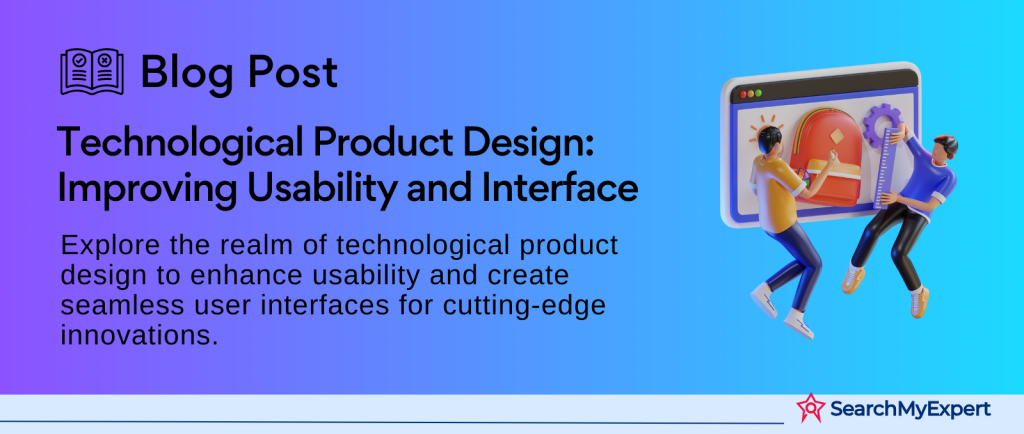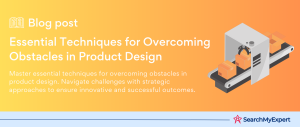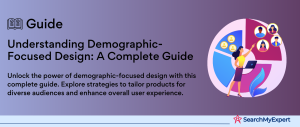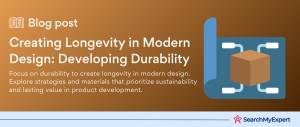The Transformative Power of Technology in Product Design
In today’s rapidly evolving world, technology stands as a colossal pillar, revolutionizing every aspect of our lives. Nowhere is this more evident than in the realm of product design, where technology has emerged as a game-changer, reshaping traditional methodologies and introducing groundbreaking possibilities. As we delve into this intricate dance of technology and design, it becomes clear that the integration of technological innovations is not just beneficial but essential in crafting products that resonate with modern consumers’ needs and aspirations.
The Rising Influence of Technology Across Industries
From the intricate circuits of the latest smartphones to the sleek aerodynamics of cutting-edge automobiles, technology has infiltrated various industries, elevating them to new heights. This integration has sparked a paradigm shift in how products are conceptualized, developed, and brought to market. In sectors like healthcare, wearable technology and smart devices are transforming patient care, while in fashion, virtual reality and AI are redefining how we experience and create style. This widespread adoption underscores a universal truth: technology is no longer an optional extra but a fundamental component in modern product design.
Technology: The Catalyst in Enhancing Product Design
The heart of our discussion lies in understanding how technology is not just altering but enhancing product design. It’s about recognizing technology as a catalyst that empowers designers to push boundaries, innovate, and create products that are not only functional but also emotionally resonant and environmentally sustainable. As we explore this intricate relationship, it’s evident that the incorporation of technology in product design is a strategic move, one that aligns with the demands of a digital-first world and paves the way for designs that are both revolutionary and relevant.
Identifying User Pain Points: The Compass for Technology Integration in Product Design
A profound understanding of user needs and frustrations is the cornerstone of effective product design. It’s like having an internal compass that guides designers and technologists in selecting the right tools and features. This process begins with meticulous user research – employing methods like surveys, interviews, and usability testing to unearth the challenges and desires of the target audience. Such insights are invaluable; they illuminate the path for integrating technologies that not only solve existing problems but also enhance the user experience. For instance, if users struggle with cumbersome interfaces, designers might leverage voice recognition technology to streamline interactions, thereby addressing a significant pain point.
Market-Driven Design: Staying Ahead with Emerging Technologies
In the realm of product design, staying relevant means keeping a pulse on market trends and emerging technologies. This approach ensures products not only meet current demands but also anticipate future needs. For example, the rise of the Internet of Things (IoT) and AI has led to the proliferation of smart home devices, reshaping how we interact with our living spaces. Designers leveraging these technologies can create products that not only resonate with current trends but also introduce new possibilities, keeping the brand at the forefront of innovation. By staying attuned to technological advancements and market shifts, designers can craft products that not only serve present needs but also pave the way for future developments.
Ethical Considerations in Technology-Driven Design
While embracing technology in product design offers numerous benefits, it’s imperative to tread this path responsibly. Ethical considerations, especially concerning user privacy, safety, and accessibility, must be at the forefront. For instance, as designers incorporate data-driven technologies, they must ensure that user data is handled with the utmost respect for privacy and security. Similarly, while striving for innovation, accessibility should not be compromised. Products need to be designed keeping in mind diverse user groups, including those with disabilities, ensuring that technology acts as a bridge rather than a barrier. This ethical approach not only builds trust with users but also reinforces a brand’s commitment to responsible innovation.
Matching Features to Benefits: Tailoring Technology to User Needs
In the realm of product design, choosing the right technology is akin to selecting the perfect ingredients for a gourmet recipe. Each technology, be it Artificial Intelligence (AI), the Internet of Things (IoT), Augmented Reality/Virtual Reality (AR/VR), or advanced materials, brings its unique flavor to the product, addressing specific user needs and enhancing functionality. For instance, AI can be employed to personalize user experiences, learning from user behaviors to make more intuitive product recommendations. IoT, on the other hand, can turn ordinary devices into smart, interconnected systems, enhancing user convenience and efficiency.
AR/VR technologies offer immersive experiences, transforming how users interact with products and environments. Advanced materials, like graphene or self-healing polymers, can revolutionize product durability and sustainability. The key is to match these technological features with tangible user benefits, ensuring that each technological integration directly addresses a specific user need or pain point.
Balancing Complexity & Affordability in Technological Integration
While integrating cutting-edge technologies can significantly enhance product design, it’s essential to strike a balance between complexity and affordability. The goal is to choose technologies that offer substantial improvements without being prohibitively expensive or overly complex for the end user. This balance ensures that the product is not only innovative but also accessible to a broad audience. For example, while incorporating AI can add sophisticated features to a product, it’s crucial to ensure that these features don’t complicate the user experience or make the product unaffordable. The technology should integrate seamlessly, enhancing the product’s value without adding unnecessary complexity or cost.
Future-Proofing Design: Navigating Rapid Technological Evolution
One of the most significant challenges in integrating technology into product design is the rapid pace of technological evolution and the potential for obsolescence. Designers must not only consider the current landscape but also anticipate future developments. This requires a keen eye on emerging trends and a flexible approach to design that allows for updates and adaptations as technology evolves. For instance, integrating modular components or software that can be easily updated can help future-proof products.
Additionally, considering sustainable and ethical technology choices can ensure that the product remains relevant and responsible in the long term. Future-proofing is about creating products that are not only advanced for today’s standards but also adaptable for tomorrow’s innovations.
Intuitive Interaction: Simplifying Technology for the User
The essence of a well-designed product lies in its ability to offer advanced technological features while maintaining simplicity and intuitiveness in its interaction. It’s crucial that the integration of complex technologies like AI, IoT, or AR/VR does not translate into a complicated experience for the user. This challenge calls for designing interfaces that are intuitive, guiding the user naturally through their interactions with the product. For example, a smart home device should allow users to easily control and customize its features, perhaps through a simple app or voice commands, without needing to navigate through convoluted menus or instructions. The technology should feel like a natural extension of the product, making the user’s life easier, not more complex.
Aesthetics & Ergonomics: Blending Technology with Design
A product’s design isn’t just about its appearance; it’s a crucial factor in how well the product functions and how users interact with it. The aesthetics and ergonomics of a product must be considered in tandem with its technological features. This means that technology should be integrated in a way that complements and enhances the product’s design. The shape, size, materials, and interface of the product should all work together to create a seamless, enjoyable user experience.
For instance, wearable technology must not only be functionally robust but also comfortable and visually appealing, encouraging users to incorporate it into their daily lives. The goal is to create a product where technology enhances the form and function, rather than detracting from it.
User Data & Analytics: Ethical Considerations in Enhancing Design
In today’s data-driven world, user data and analytics play a pivotal role in product design, especially when technology is a key component. Products integrated with technology often generate a wealth of user data, which can be invaluable for understanding how the product is used and how it can be improved. However, this comes with a significant responsibility to handle user data ethically and responsibly. Designers and companies must ensure that data collection is transparent, privacy is safeguarded, and the data is used solely to enhance user experience and product functionality. Additionally, user feedback and data should be leveraged to inform future product iterations, ensuring that the product evolves in line with user needs and preferences.
Rapid Prototyping & Iteration: Refining Design through Continuous Improvement
Rapid prototyping and iterative design are the backbones of successful product development, especially when integrating complex technologies. This approach involves creating multiple versions of a product prototype quickly, enabling designers to test and refine the functionality and user experience at each stage. With each iteration, the integration of technology, such as AI, IoT, or advanced materials, can be assessed and improved. This process is crucial for identifying and resolving issues early, ensuring that the final product seamlessly blends technology with design. For example, a prototype of a wearable device can be iteratively tested and tweaked for comfort, user interface, and performance, allowing for adjustments based on real-world use and feedback.
User Feedback & Usability Testing: Perfecting Design through User Insights
User feedback and usability testing are integral to the prototype development process. They provide invaluable insights into how real users interact with the product, highlighting areas for improvement that might not be apparent in the design phase. This feedback loop allows designers to understand user pain points, preferences, and the overall usability of the product. By engaging users in the testing process and incorporating their feedback, designers can fine-tune the product to better meet user needs and expectations. For instance, testing a new smart home appliance with actual users can reveal insights into its usability and functionality, leading to design changes that make the product more intuitive and efficient.
Sustainability & Environmental Impact: A Responsible Approach to Technological Integration
Incorporating technology into product design must also be approached with a keen awareness of sustainability and environmental impact. This involves considering factors such as the sourcing of materials, energy consumption during use, and the product’s end-of-life management. Designers should strive to use eco-friendly materials and design products for energy efficiency, thereby reducing the environmental footprint. Additionally, considering the product’s entire lifecycle is important. This includes designing for durability to extend the product’s lifespan and planning for recyclability or disposal at the end of its life. For example, a technologically advanced product should not only deliver on functionality and aesthetics but also be designed with sustainable materials and energy-efficient operations, aligning with the growing global emphasis on environmental responsibility.
Effective Marketing & Communication: Showcasing the Tech-Enhanced Value Proposition
When launching a technology-infused product, the effectiveness of marketing and communication strategies is pivotal in determining its market success. This involves clearly articulating the value proposition and user benefits of the product’s technological features. A compelling marketing campaign should highlight how the technology enhances the product’s functionality, improves user experience, and solves specific problems. For instance, if a product uses AI to personalize experiences, this should be a focal point in marketing materials, demonstrating how this technology makes the product more intuitive and user-friendly. Utilizing various platforms, from social media to traditional advertising, with a clear and consistent message can effectively communicate the unique selling points of the product to the target audience.
Customer Support & Training: Ensuring a Smooth Transition for Users
Post-launch, providing robust customer support and training is essential to help users navigate and fully utilize the tech-infused features of the product. This support can take various forms, such as online tutorials, user manuals, FAQ sections, and customer service hotlines. Especially for products with novel technological features, users might require guidance to understand and use the product effectively.
For instance, if a new smart appliance is introduced to the market, offering detailed tutorials and responsive customer support can help users adapt to the new technology and enhance their overall experience with the product. Adequate training and support not only improve user satisfaction but also reduce the likelihood of frustration and product returns.
Continuous Improvement & Updates: Keeping the Product Relevant and Up-to-Date
The launch of a technology-based product is not the end of its development journey. Continuous monitoring, feedback collection, and regular software updates are crucial to maintain its relevance and user satisfaction over time. Monitoring user feedback and usage patterns can reveal insights into areas for improvement, new features to be added, or bugs that need fixing. Regular software updates are especially important for products that rely on digital technologies, as they ensure the product stays compatible with other devices and systems and secure against potential cyber threats.
For example, a smartphone manufacturer needs to regularly update its devices to introduce new features, enhance security, and improve user experience. This approach to continuous improvement and updates demonstrates a commitment to product excellence and customer satisfaction, fostering long-term loyalty and trust.
Recap of Key Benefits: Elevating Product Design through Technology
The integration of technology into product design marks a significant leap forward in how we conceive, create, and interact with products. Throughout this discussion, we’ve seen how technologies like AI, IoT, AR/VR, and advanced materials can significantly enhance a product’s functionality, enrich the user experience, and bolster its appeal in the market. These technological integrations allow for more personalized, efficient, and engaging products, meeting the evolving demands of modern consumers. From smart appliances that learn our preferences to wearables that monitor our health, the fusion of technology and design has set new standards in product innovation and usability.
Impact & Implications: The Ripple Effect of Technology-Driven Design
The broader impact of technology-driven product design extends far beyond individual products, influencing entire industries, societal norms, and consumer behaviors. As products become more intelligent and interconnected, they open new possibilities for efficiency, accessibility, and sustainability. This evolution in product design is reshaping industries, prompting companies to innovate continually and adapt to a technology-centric market. Furthermore, as consumers become more accustomed to tech-enhanced products, their expectations and behaviors evolve, driving demand for even more innovative, user-centric designs. This cycle of innovation and adaptation is leading to a more technologically integrated society where the boundaries between digital and physical experiences are increasingly blurred.
Looking Ahead: The Horizon of Emerging Technologies
As we look to the future, emerging technologies hold immense potential for further transforming product design. Advancements in fields like quantum computing, biotechnology, and nanotechnology are poised to open new frontiers in how we design and interact with products. These technologies could lead to unprecedented levels of personalization, efficiency, and sustainability in product design.
For example, biodegradable electronics and energy-harvesting materials could revolutionize the sustainability of tech products, while advancements in AI and machine learning could lead to even more intuitive and adaptive designs. The future of product design is one of endless possibilities, where continuous exploration and innovation are the keys to creating products that not only meet the needs of the present but also anticipate and shape the future.
Conclusion:
In this comprehensive exploration, we’ve uncovered the multifaceted ways in which technology is revolutionizing product design. From enhancing functionality and user experience to increasing market appeal, the integration of advanced technologies like AI, IoT, and AR/VR is setting new benchmarks in innovation. As we look towards a future brimming with potential, emerging technologies promise to further elevate product design, driving industries and consumer behaviors towards a more interconnected and tech-savvy world.
The journey of technology in product design is not just about advancement; it’s about crafting a future where design and technology coalesce to create products that are not only functionally superior but also intuitively aligned with our evolving lifestyles. As we continue to navigate this exciting landscape, one thing is certain: the intersection of technology and design will remain a fertile ground for innovation, inspiring a new era of products that are as intelligent as they are impactful.
Shape the future of your product with our Product Design Company.
Table of Contents
Toggle






